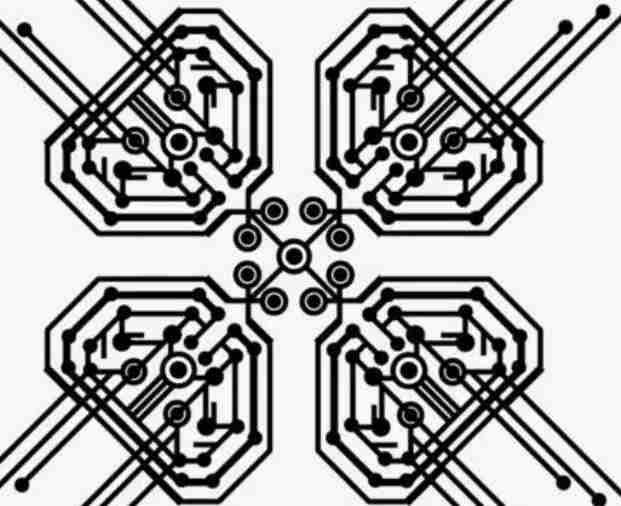
With the continuous progress of electronic technology, more and more fields will be applied to embedded systems, and in this many applications, people are no longer considering the function and performance, but reliability and compatibility. Then, how to improve the signal integrity of embedded system PCBthrough wiring technology becomes an "important issue".
As we all know, PCB(printed circuit board) is the basic supporting part of circuit components and devices in electronic products, and its design quality often directly affects the reliability and compatibility of embedded system. In the past, the clock frequency of some low speed circuit boards was only about 10 MHz. The main challenge of circuit board or package design was how to lay all the signal lines on the double layer board and how to assemble without breaking the package.
Since interconnectors do not affect system performance, the electrical characteristics of the interconnectors are not important. In this sense, the interconnect in the circuit board with low signal speed is smooth and transparent. However, with the development of embedded system, the circuit used is basically high frequency circuit, because of the increase of clock frequency, signal rising edge is shorter, the printed circuit generated by the signal capacitive reactance and inductive reactance will be far greater than the printed circuit itself resistance, seriously affecting the integrity of the signal. For embedded systems, signal integrity effects become important when the clock frequency exceeds 100 MHz or the rising edge is less than 1 ns.
In PCB, signal line is the main carrier of signal transmission, the routing of signal line will directly determine the superior signal transmission, thus directly affecting the performance of the whole embedded system. Improper wiring will seriously cause multiple signal integrity problems, generate timing, noise and electromagnetic interference (EMI) to the circuit, and seriously affect the embedded performance. In this paper, starting from the actual electrical characteristics of signal lines in high speed digital circuits, the electrical characteristics model is established to find the main reasons that affect the integrity of signals and the ways to solve the problems, and the problems that should be paid attention to and the methods and skills to follow in wiring are given.

Signal integrity
Signal integrity refers to the quality of the signal on the signal line, that is, the ability of the signal to respond with the correct timing and voltage level in the circuit. Good signal integrity refers to the voltage level value that must be reached when needed. Poor signal integrity is not caused by a single factor, but by a combination of factors in board design. Signal integrity problems are embodied in many aspects, including delay, reflection, crosstalk, overshoot, oscillation, ground elasticity and so on.
Delay: Delay means that the signal is transmitted at a limited speed on the transmission line of the PCB board. The signal is sent from the sending end to the receiving end, and there is a transmission delay between. The signal delay will affect the embedded timing. The transmission delay depends mainly on the length of the wire and the dielectric constant of the medium around the wire. In high-speed digital systems, the length of signal transmission line is the most direct factor affecting the clock pulse phase difference, which means that the time of two clock signals produced at the same time to the receiver is not synchronized. The clock pulse phase difference reduces the predictability of signal arrival along the line. If the clock pulse phase difference is too large, the wrong signal will be generated at the receiving end.
Reflection: Reflection is the echo of the signal on the signal line. When the signal delay time is much longer than the signal hop time, the signal line must be treated as a transmission line. When the characteristic impedance of a transmission line does not match the load impedance, some portion of the signal power (voltage or current) is transmitted to the line and reaches the load, but some portion is reflected. If the load impedance is less than the original impedance, the reflection is negative; Conversely, the reflection is positive. Changes in wiring geometry, incorrect wire terminations, transmission through connectors, and power plane discontinuities can cause such reflections.
Crosstalk: Crosstalk is the noise caused by the coupling between two signal lines, mutual inductance and mutual capacity between signal lines. Capacitive coupling causes coupling current, while inductive coupling causes coupling voltage. Crosstalk noise results from electromagnetic coupling between signal wire network, between signal system and power distribution system, and between holes. String winding may cause false clock and intermittent data error, which affects the transmission quality of adjacent signals. In reality, crosstalk cannot be completely eliminated, but it can be controlled within the system's tolerance. The parameters of PCB board layer, signal line spacing, electrical characteristics of driver end and receiver end, and baseline end mode all have certain influence on crosstalk.







